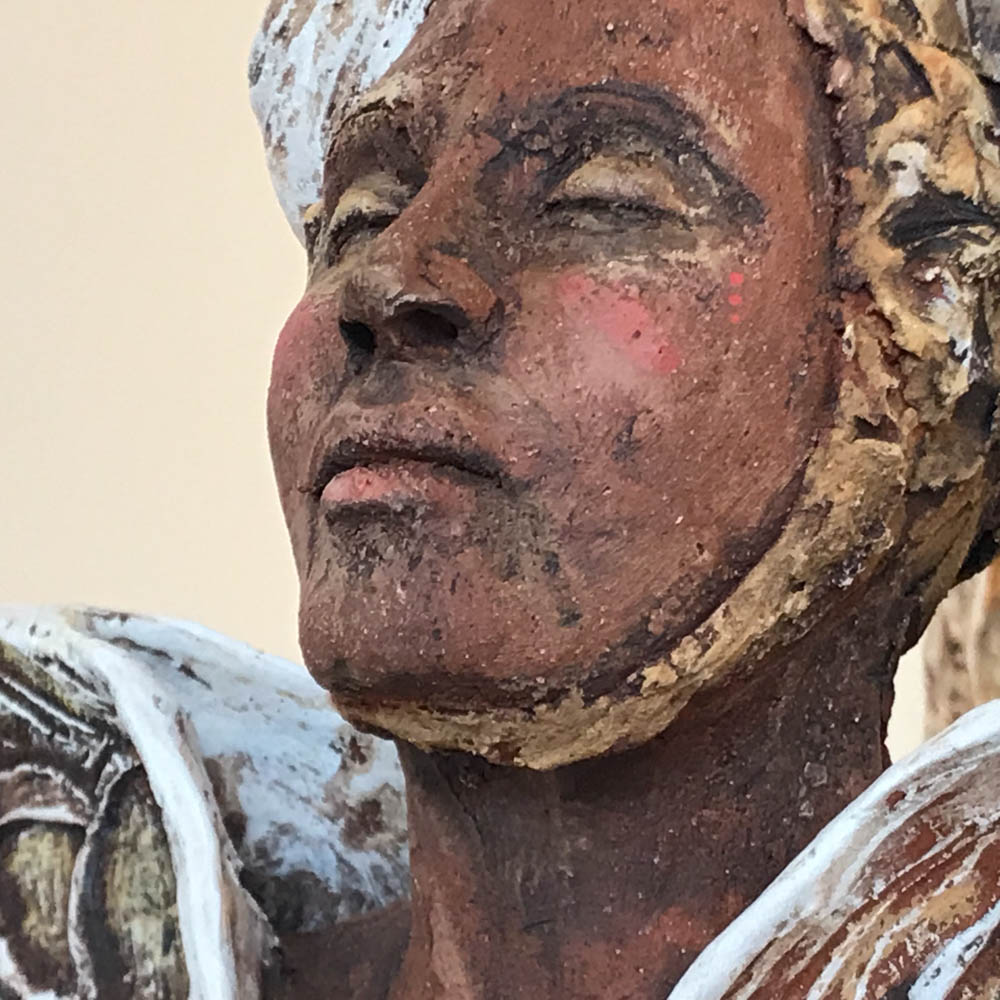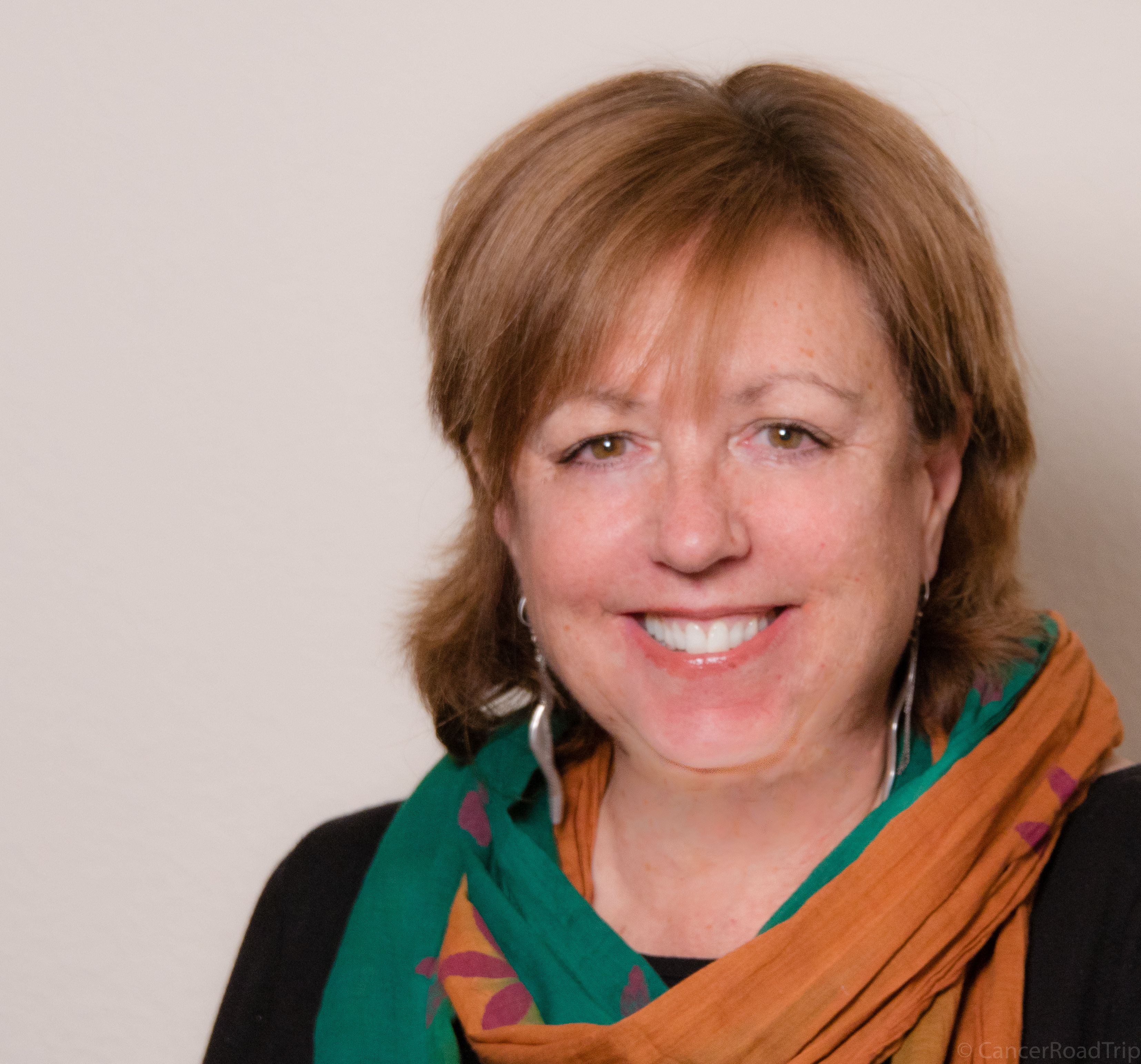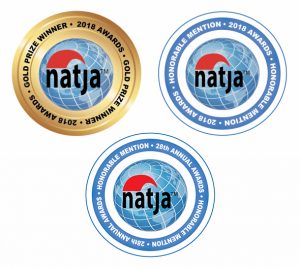Serendipity has played a part in the Abiquiu Art Project, located in Abiquiu, New Mexico.
Who could have predicted that five accomplished artists would have independently settled around a mesa, rather in the middle of nowhere, overlooking Plaza Blanca?
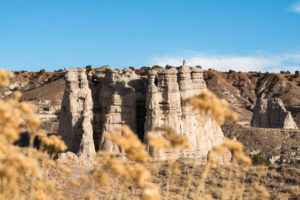
Plaza Blanca, Abiquiu NM
Never mind that Georgia O’Keeffe painted these curious rock formations decades ago; or that Shirley MacLain owns a ranch down the way. The serendipity of this cluster of talent is at the very least curious, but more likely serendipitous.
But consider the cast of characters:
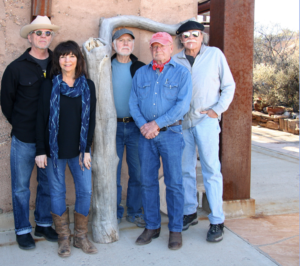
The Artists of the Abiquiu Art Project Photo Credit: Abiquiu Art Project
From left to right:
Frank Shelton: Painter, Multimedia Artist, Maker of Secret Keepers.
Debra Fritts: Figurative Ceramicist, Sculptor, Teacher.
Joseph Hall: Jeweler, Perfectionist, Ring Leader.
Walter Nelson: Photographer, Painter, Adventurer. (Serious adventurer; see below!)
Doug Coffin: Of Potawatomi/Creek Heritage, Sculptor, Wine Lover.
Doug Coffin considers this cluster of talent one of those “Paris in the Forties” moments, where intense artists doing intense work have coalesced together. This wide ranging combination of talent makes up the Abiquiu Art Project. And at the heart of it all is Teresa Toole, who has organized the project which takes a look beyond traditional galleries and museums to experience art where it happens: in the artist studio. Her vision and tireless efforts are once again putting modern day Abiquiu on the map for art lovers.
Abiquiu (A-bih-kyoo) is a quiet village. The Chama river runs through it and along the river are residences, some of which are quite beautiful. And yet next door may be a run down trailer or two. The land’s habitation has been organic, and everyone shares in give and take of this New Mexico town.
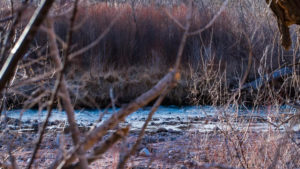
The Chama River early in spring in Abiquiu
Abiquiu is best known for Georgia O’Keeffe’s house, and tours are available if booked in advance. And a new Georgia O’Keefe welcome center has recently opened. But perhaps even more interesting is the current art scene in and around this tiny village.
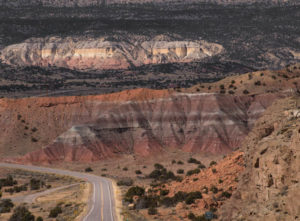
Route 84 North to Abiquiu
Click Here to Visit The Photo Gallery
Coming up Route 84 from Santa Fe, one could easily speed by Abiquiu if one weren’t looking for the small town crossroad. The Aboquiu Inn and Restaurant nestles quietly alongside the highway and next door (with gas) is a regional landmark, Bodes.
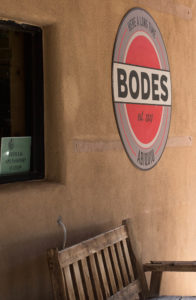
Bodes is the only game in town and it carries everything from wine to worms (more or less)
As their logo says, “here a long time“. Bodes was originally established as a general store –Grants Mercantile– in 1890. Located strategically at the start of the Old Spanish Trail, it was a combination store, post office, stage coach stop and jail. In 1919, Martin Bode ought the store and the rest is history.
Bodes offers lunch, but I have to say my preference is for the Abiquiu Inn. A recent lunch of local trout, perfectly cooked and served with vegetables and masa was just lovely. The green chile stew at Bodes, not so much. But it depends on what you’re in the mood for. Some swear by Bodes. Some by the Inn. I say try both!
Here the typical tourist will usually wander north to Ghost Ranch, Georgia O’Keeffe’s ranch where she painted many of her most famous and iconic paintings. Once there you can take a tour and see pictures of Ms. O’Keeffe’s paintings side by side with the landscape she painted. But before you follow the road more traveled, consider a detour. Consider the Abiquiu Art Project.
Five artists. Five talents. Five galleries. And be sure to bring your Visa.
The Abiquiu Art Project: Walter W. Nelson
“In traveling this visual journey, I have relied on the masters, past and present, for inspiritation in light and shadow, color, texture, form and idea. I used these inspirations as a point of departure for my voyages into visual delights and mystical realms, my work striving to be present in the moment, to take the viewer “from the without to the within and back to the without again”.
Walter W. Nelson’s studio is tucked off a dirt road just behind Bodes General Store.
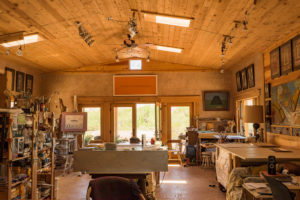
Walter Nelson’s Gallery on the Abiquiu Art Tour
Walter’s art credentials are impeccable. But I was most fascinated by his story and his photography.
One day, some years ago now, Walter and his friend Douglas Preston decided to trace Coronado’s explorations. Funded by a grant from the Smithsonian, these two men, a horse handler (of sorts), six horses, and a dog that later joined them, set off across a thousand miles of nearly uninhabited terrain in the American Southwest.
What resulted was a most excellent adventure chronicalled in the book Cities of Gold. If you read one adventure book this year, read this. It’s an epic thousand mile story following Coronado’s footsteps from the Mexican border in Arizona to New Mexico. The book includes photography from Walter, with the tale written by his best friend and best selling author Douglas Preston.
Walter’s photography has been part of his artistic endeavorers for decades now. His most recent book takes readers deep into the Black Place a location made famous by Georgia O’Keefe. It’s a harsh desert of two seasons-brutal heat and frigid cold.
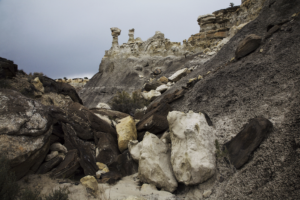
One of the photographs from The Black Place Collection Photo Credit: Walter W. Nelson
His pictures stop you in your tracks. They are stunning; the type of detailed, composed, talented old fashioned photography that no iPhone could duplicate. And his trek to the Black Place is timeless:
“I must have seen the Black Place first driving past on a trip into the Navajo country and, having seen it, I had to go back to paint…. as you come to it over a hill, it looks like a mile of elephantsgrey hills all about the same size with almost white sand at their feet…. Such a beautiful, untouched, lonely-feeling place….” –Georgia O’Keeffe
Walter also paints, sculpts and creates stunning multi-media pieces. You can view Walter’s work on his website: WalterNelson.com.
To visit this gallery contact Teresa Toole, Abiquiu Art Project www.AbiquiuArtProject.com 505.685.0504
The Abiquiu Art Project: Debra Fritts
“Working intuitively from pounds of wet red clay, forms appear and stories develop… Each sculpture is hand built, using thick coils, and fired three to five times depending on the color and surface I am trying to achieve. I approach the color on the clay as a painter. My palette is a combination of oxides, slips, underglazes, and glazes. The form of the piece informs the type of surface treatment.”
Considerably off the beaten path is the studio of Debra Fritts and Frank Shelton (husband and wife).
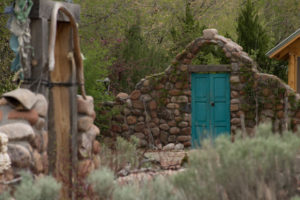
A doorway set in a stone wall at the Gallery of Debra Fritts and Frank Shelton in Abiquiu
Frank describes Debra’s work as a combination of Etruscan, Early Greek and Contemporary. Her artistic vision as a figurative ceramicist is unique and complex. Layer after layer of clay, various slips and colors create an intricate sculpture.
I asked her if she’d considered bronzing any of her pieces.
She stopped.
“Yes,” she replied. “I’d have to do something with drips of paint on it or something,” she responded thoughtfully. “A lot of times I look at bronzes and I feel there isn’t an edge to it. It’s more traditional and I like a little edge in my work.”
Debra continued on the topic of bronzing. She’d played with idea of taking one piece–perhaps a raven’s head– to Shidoni in Tesuque (article to follow on this historic foundry and gallery), but the foundry closed after the economic downturn in 2008. The foundry still exists, but it has relocated to Albuquerque.
Debra’s creations are one of a kind, from (very affordable) wind chimes made of off white pottery pieces (shaped as wishbones for good luck), hung from old iron horse bits, and intermingled with antique black feathers and woven turquoise strands made from old prayer flags; to her free standing sculptures, which are just magnificent.
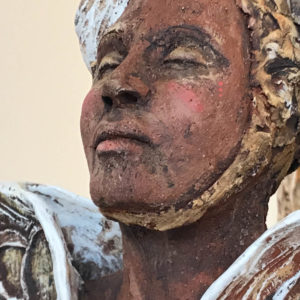
Close up of one of Debra Fritts’ free standing sculptures in her Abiquiu workspace
One of the things I am learning in my artistic travels is the depth of experience and expertise, often spanning decades, that is needed to produce a work of art. The piece below is still a work in progress. Debra wonders about extending the wings vs. keeping them clipped; about slips, oxides, underglazes and colorants, each of which get fired onto the sculpture; light vs. shadow on the overall piece. The decisions are seemingly endless and each has a profound implication for the final piece.
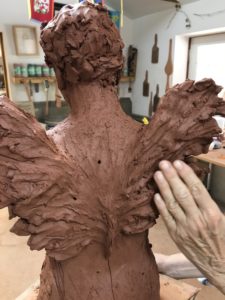
A work in progress in Debra Fritts’ Abiquiu Gallery
The firing process is done in a carefully controlled kiln environment. Debra prefers a slow firing. After weeks–or more– of work on a piece, she takes her time with this step.
And again, at this juncture, multiple decisions need to be made. At higher temperatures, the clay takes on a darker color. Higher temperatures also mean longer firings. At 1800 degrees it might take 12 hours to fire a piece; at 2400 degrees it could be 16-18 hours.
To say I’m taken with Debra’s work is an understatement. And then, I spent some time with her husband, Frank Shelton.
Visit Debra’s website to see more of her work. To visit this gallery contact Teresa Toole, Abiquiu Art Project www.AbiquiuArtProject.com 505.685.0504
The Abiquiu Art Project: Frank Shelton
“My process of working may best be described by paraphrasing a quote from the late Israeli artist, Moshe Kupferman. “…I first put in emotion and expression. Next, I cover it up. Then, I put in silence…” While, the process and product are important to me, I feel both are dead without passion. It is the passion that sustains me as an artist and human being.”
Frank Shelton is Debra Fritts’ husband, and together they share studio space at their stunning Abiquiu residence. Their public gallery is a quiet, spiritual place that they call “the chapel”.
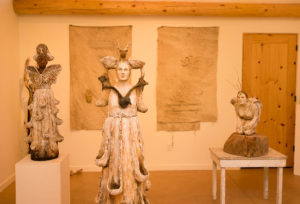
Franks work hangs on the wall; Debra’s sculpture is free standing in the gallery called “The Chapel” in Abiquiu
While Debra’s work is very expressive, Frank’s work is minimalistic, but do not confuse minimalistic with less than thoughtful. On the contrary, the deep thought and impact of Frank’s pieces are stunning.
In his piece Order = Diversity, part of his Points of Connection series, he explores the tension between order and disorder. He starts by creating a precise grid on canvas:
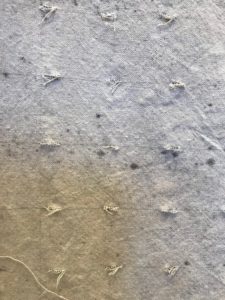
The work starts with a precise grid pattern. (Frank Shelton’s Abiquiu Gallery)
And overlaying this are layer upon layer of thought and contemplation expressed in subtle color and drawing. The final painting is fascinating, as these two opposite elements create tension in a minimalist setting.
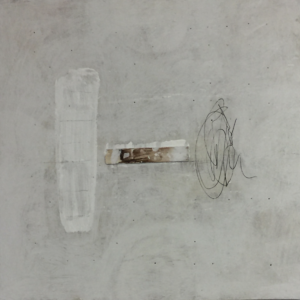
Order = Diversity in Abiquiu
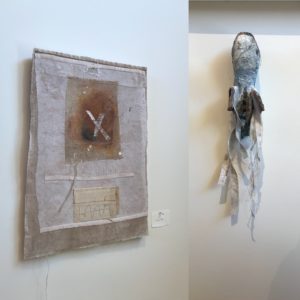
On the left, one of Frank Shelton’s works; on the right, one of his Secret Keepers in his Abiquiu gallery
In addition to his painting , Frank also creates “Secret Keepers”, figures of fiber, plaster and concrete. The Secret Keepers are intriguing. I wonder if creating a Secret Keeper might be part of my healing retreats. What secret would you want kept?
The gallery and the property are both beautiful, restful places where many wonderful pieces are constantly being created. It’s well worth a trip to Abiquiu.
Click here for Frank Shelton’s website. To visit this gallery contact Teresa Toole, Abiquiu Art Project www.AbiquiuArtProject.com 505.685.0504
The Abiquiu Art Project: Doug Coffin
High atop the mesa is the gallery of Doug Coffin.
“Coffin has developed a style that suggests a fusion of the ancient totemic forms used by many Native cultures with the abstract and geometric forms of modernism, creating a visual language that relies less on a narrative storyline and more on powerful design metaphors… For me, the spiritual in artwork is essential… As an artist, I use symbols – numeric and geometric – to represent these most powerful elements of life and the universe. My art is about contrast, both in time and space. What interests me are the images that live in the mind long after the reality is gone.”
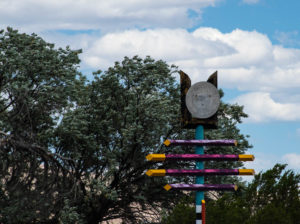
Doug Coffin Sculpture in his yard on the mesa above Plaza Blanca near Abiquiu
I find Coffin’s sculptures stunning, exotic, yet still accessible. The totem roots speak deeply to my soul, in his sculpture and his paintings. Doug is of Potawatomi/Creek heritage. He is quiet and reserved, and in many of his paintings is a bit of vibrant red, an homage to his Indian heritage.
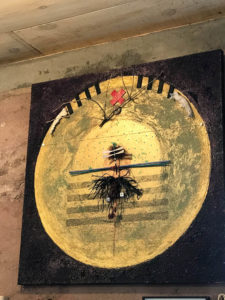
Painting in the studio of Doug Coffin in Abiquiu
One of Doug’s current projects is a massive installation of thirty foot totem in Kansas. You can see him standing with the painted model in the poster in back:
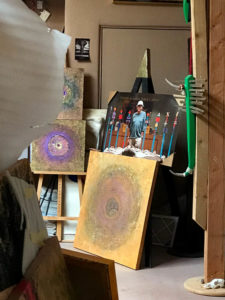
Picture of Doug standing with his model for 30 foot totem installation I this Abiquiu gallery.
The entire gallery is just fun and fascinating. And that includes the bathroom, which is hung with floor to ceiling pictures of Doug with his Hollywood friends over the years. His wife is a well know film maker, and between them, a most eclectic clientele seems to find their way to Doug’s studio.
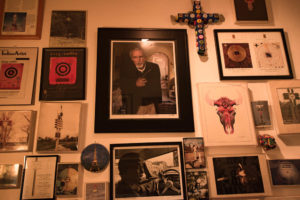
Dennis Hopper, among others, adorns the walls of Doug’s powder room I Abiquiu. Check behind the door for Pierce Brosnan and more!
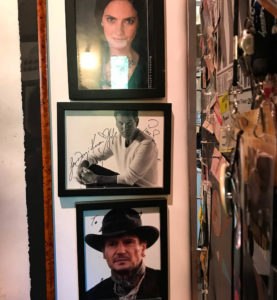
Celebrities in Doug Coffin’s bathroom I nAbiquiu
Click here for Doug Coffin’s website. To visit this gallery contact Teresa Toole, Abiquiu Art Project www.AbiquiuArtProject.com 505.685.0504
The Abiquiu Art Project: Joseph Hall
“Aesthetically, my work often centers on abstract architecture and landscapes, and semiotics, but after coming to New Mexico five years ago, some of my work is beginning to show the influence of the desert, geology, and cultures that surround me. I am particularly interested in pushing the idea of “ring”—what a ring can be, while still being wearable. Jewelry at its best is wearable art.”
Joseph’s jewelry is exquisite. The workmanship and detail in each piece is the product of decades of practice. Joseph started designing jewelry over 40 years ago in Seattle where his client list was a who’s who of the Seattle and the technology scene. While he crafts a wide range of jewelry, rings have become his focus. He is a master craftsman, combining visual aesthetics, gems, and creativity with a highly technical background in metals.
In 1980, Joseph published one of the first papers in the United States on the coloring and use of titanium and related metals (tantalum, niobium, hafnium, etc.—the “refractory” metals) in jewelry. He has a Master of Fine Arts degree from the University of Washington. He has been a Distinguished Member of the Society of North American Goldsmiths (SNAG), and has taught and lectured at colleges and universities throughout the United States. He also has degrees in science (BS), and urban planning (MS).
Joseph is currently working on an art project considering the concept of a “hyperobject” dealing with satelight imagery in the southwestern Texas desert around the small town of Marfa.
Here are a few examples of some of his incredible creations:
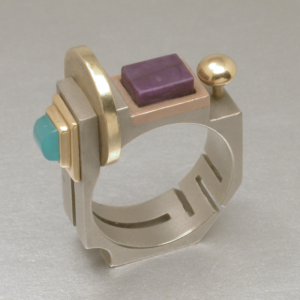
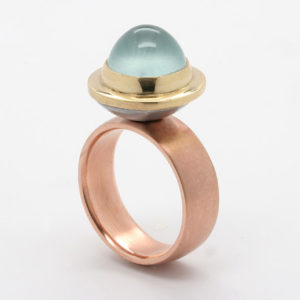
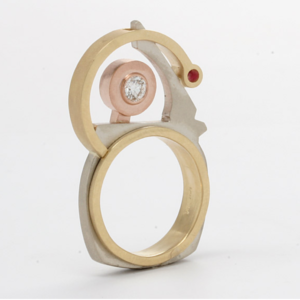
Photo credit for rings: Joseph Hall
You can see more of Joseph’s creations on his website, RingworksStudio.com. To visit this gallery contact Teresa Toole, Abiquiu Art Project www.AbiquiuArtProject.com 505.685.0504
Click Here to Visit The Photo Gallery
More Reading on the Art Scene in and Around Santa Fe:
Inside The Georgia O’Keeffe House in Abiquiu
Inside the Georgia O’Keeffe House: Ghost Ranch
The Not So Quintessential Ghost Ranch
The Art, Culture and Beauty of Santa Fe
Luxor, Egypt From Santa Fe Artist Steven Boone
Photo Gallery of Santa Fe Artist Steven Boone
Puye Cliff Dwellings: Earth, Spirit, Fire and Art
Santa Clara Pueblo: Cliffs, Pottery and Art
Like This Post? Pin It!
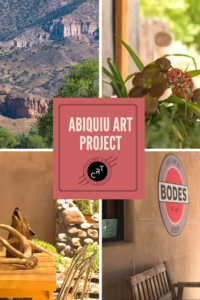
Abiquiu Art Project
If you’re interested in learning more about photography (or cooking or film or any number of topics) check out MasterClass All-Access Pass for on-line excellence:
[et_bloom_inline optin_id=”optin_10″]
What is #CancerRoadTrip and how did it come to be? Read this post to get the backstory!
Follow me on Twitter, Pinterest, Instagram, and at Anti-Cancer Club. Connect with me! I may need a place or two to stay along the way!

